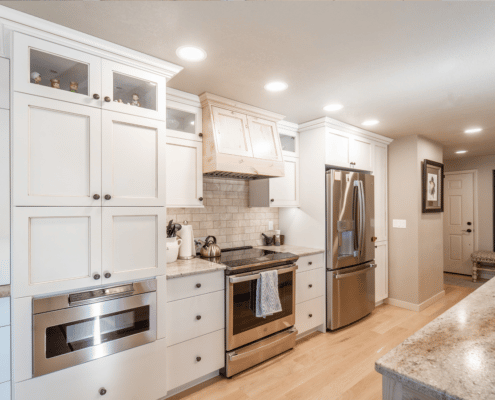Every month, we hope to bring our readers helpful tips and interesting content that inspires, educates, and empowers homeowners. This month, we’re shedding some light on a common, and somewhat notorious, concept in the home remodeling industry: Scope Creep. There are many components to the Design Build remodel process. The initial meeting, measurements, concept design, defining the scope of work, finalizing the design plan, obtaining permits, ordering materials, moving into production, communicating with subcontractors, and checking off every item on the final punch list to ensure the client has a new living space that is exactly what they dreamed of. Along the way, a phenomenon known as scope creep can sneak up on homeowners at one point or another if they’re not prepared. Scope creep happens when, after the scope of work has been established, a client later decides they want to add another window, change a material selection, go with a different appliance, or any of the other changes that a client might decide they want to make as the project moves along. Wants and needs can evolve in the excitement of a remodel project, and change orders exist for a reason, but a result to keep in mind is the likelihood that these changes will affect both the cost and timeline of the project depending on the specific changes being requested. To avoid surprises, it is helpful for homeowners to be cognizant of scope creep from the start of the project. You will thank yourself later for being mindful in your selections and confident in your project’s defined scope of work! For example, deciding you want to go with a different front door after seeing a design you liked on Pinterest might seem like a simple change, but your new selection could alter your project’s scope of work depending on product availability, shipping speed, installation, and price. A major benefit of hiring a Design Build company for your project is that the design team and build team communicate with each other, and the client, throughout the entire remodel process for a more streamlined experience. Renovations can be overwhelming for any homeowner, and change is inevitable in life, so choosing an experienced contractor who you can trust to keep you informed and take on challenges will ensure you get the most out of your investment.Managing Scope Creep on Your Project
 Properly defining the scope of work takes a genuine understanding of the customer’s wants and needs, and mindful attention to the details. The scope of work helps establish a budget and time frame and keeps the client and contractor on the same page about what the remodel project will entail. Once the scope of work is agreed upon, we move to the design retainer phase. In this creative phase, the project designer works closely with the client to select colors, fixtures, and materials.
Properly defining the scope of work takes a genuine understanding of the customer’s wants and needs, and mindful attention to the details. The scope of work helps establish a budget and time frame and keeps the client and contractor on the same page about what the remodel project will entail. Once the scope of work is agreed upon, we move to the design retainer phase. In this creative phase, the project designer works closely with the client to select colors, fixtures, and materials.
BUSINESS HOURS
Monday 8AM-5PM
Tuesday 8AM-5PM
Wednesday 8AM-5PM
Thursday 8AM-5PM
Friday 8AM-5PM
Saturday Closed
Sunday Closed




